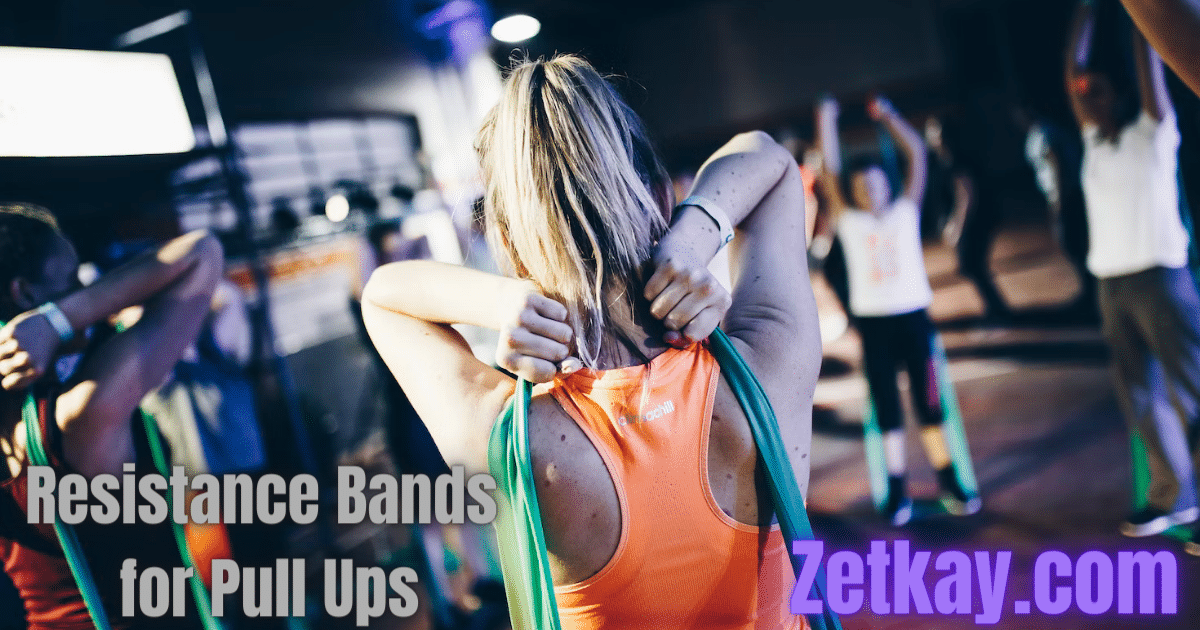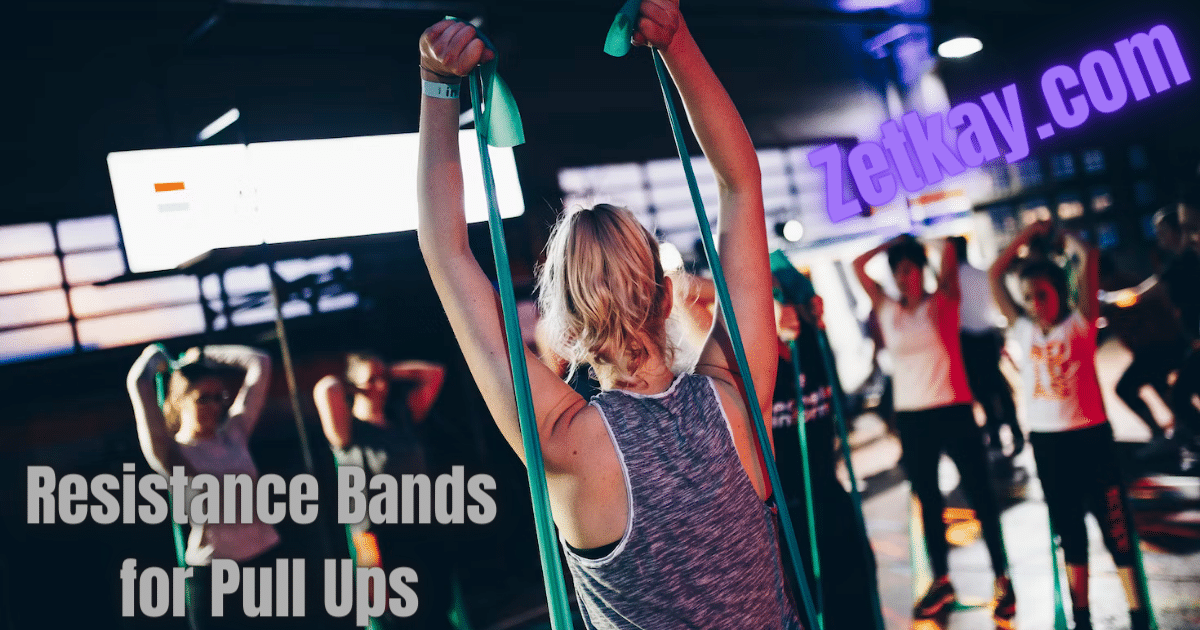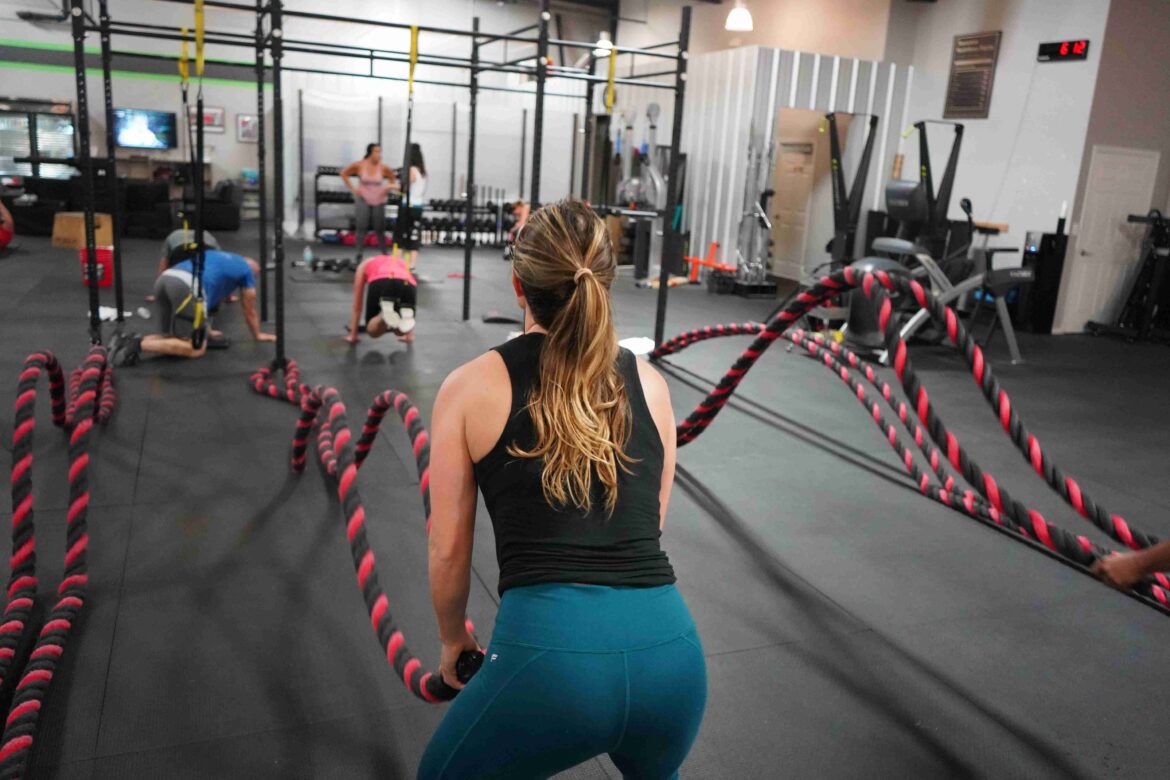Introduction
Resistance Bands for Pull Ups, If the repetition of your typical pull-up practice is wearing you out, adding resistance bands to your training routine might provide a much-needed challenge. These bands are a terrific alternative to traditional weights, providing a way to improve strength and flexibility while reducing the chance of injury.
Let’s explore the different world of resistance bands on the market together. Resistance Bands for Pull Ups, We’ll walk you through the many styles and help you choose the best bands for your fitness level. In addition, we’re here to give tips for maintaining appropriate form and technique for pull-ups with resistance bands.
Key Takeaways:
- Resistance bands provide a safe and effective way to intensify your pull up workout.
- Choosing the right resistance bands will depend on your fitness level and workout goals.
- Proper form and technique are key to getting the most out of your resistance band pull-up workouts.
- Advanced techniques and full-body integration can take your resistance band training to the next level.
- When used correctly, resistance bands can help you reach your fitness goals faster and with fewer injuries.
What are Resistance Bands?
Resistance bands are a type of elastic band used for various forms of exercise and physical therapy.Resistance Bands for Pull Ups, It consists of a flexible strip of rubber or latex, which can be stretched or pulled to provide resistance against the force applied to it.
There are several benefits of using resistance bands for exercise and therapy, including:
- Low impact
- Reduced risk of injury
- Versatility
- Portability
- Cost-effective
Resistance bands come in various types, including loop bands, therapy bands, and tube bands. Loop bands are shaped like a closed loop, whereas therapy bands are flat and have varying levels of resistance. Tube bands consist of a long, flexible tube with handles at each end.
The Different Levels of Resistance
The resistance level of a band is determined by its thickness and length. The thicker the band, the more resistance it provides, whereas the shorter the band, the less resistance it provides. Resistance bands usually come in different levels, ranging from extra light to extra heavy. The levels of resistance cater to various fitness levels.

How Do Resistance Bands Work?
Resistance bands work by creating a force opposite to the one applied to them. When used during exercise, resistance bands provide an external resistance that challenges the targeted muscles. Resistance Bands for Pull Ups, The resistance can increase as the band is stretched further, providing tension throughout the entire movement. This increased tension allows for greater activation of muscle fibers and a more challenging workout.
Why Use Resistance Bands for Pull Ups?
If you’re looking to level up and challenge your pull-up workouts, resistance bands are the perfect addition to your routine. Resistance Bands for Pull-Ups, Not only do they increase the difficulty and intensity of your exercises, but they also have several advantages over traditional pull-ups.
Advantages of Using Resistance Bands for Pull Ups:
| Advantage | Description |
| Assisted Pull Ups | Resistance bands are excellent for beginners or those working on achieving their first unassisted pull up. They provide support to perform the movement correctly and safely until you gain the required strength. |
| Increasing Resistance | Resistance bands come in different levels of resistance, allowing you to gradually increase the intensity of your workouts as you get stronger. |
| Targeting Different Muscle Groups | Resistance bands engage different muscle groups during pull ups, providing a more comprehensive workout than traditional pull ups. |
| Convenience and Versatility | Resistance bands are small and portable, making it easy to bring them wherever you go and use them for full-body workouts beyond just pull ups. |
By using resistance bands for pull ups, you can challenge your muscles, avoid plateaus, and achieve your fitness goals faster than ever before.
Best Types of Resistance Bands for Pull Ups
When it comes to selecting the best resistance bands for pull ups, it is essential to take into account various factors like your fitness level, goals, and preferences. Resistance Bands for Pull Ups, Here are some of the best types of resistance bands that can be used for pull ups:
| Resistance Band Type | Features |
| Loop Resistance Bands | Form a continuous loop that can be placed around the bar and used for assisted pull ups. |
| Tubing Resistance Bands | Consist of long tubes with handles at the end that can be used for pull up variations and other exercises. |
| Mini Resistance Bands | Short and compact bands that can be easily carried around and used for pull up variations or warm-ups before workouts. |
| Assisted Pull Up Bands | Designed specifically for pull ups, these bands provide varying degrees of assistance according to the user’s level of fitness and strength. |
| Combined Resistance Bands | Have multiple layers of latex tubing, making them stronger and more durable than individual bands. |
Each type of resistance band has its own unique benefits and drawbacks. Consider your workout needs and preferences when selecting the best option for your routine.
Note: It is essential to check the bands for quality and durability before purchasing. A good quality band will last longer and provide better results.

How to Find the Right Resistance Level for Your Pull Up Workouts
Choosing the right resistance level is essential to get the most out of your pull up workouts with resistance bands. The right level of resistance will help you achieve your goals and avoid injuries. Resistance Bands for Pull Ups, Here are some tips on how to find the perfect level of resistance:
Consider Your Fitness Level
Your fitness level is a crucial factor when choosing the resistance level of your bands. If you’re a beginner, start with light resistance and gradually move up. Resistance Bands for Pull Ups, Experts recommend working with 60-80% of your maximum effort for the best results.
Choose Based on Your Goals
Resistance Bands for Pull Ups, Consider your goals when selecting the right resistance level. Are you working on building strength, toning your muscles, or losing weight? Each goal requires different resistance levels to achieve optimal results.
Test Different Levels
It’s essential to test different resistance levels to determine which one works best for you. Resistance Bands for Pull Ups, Don’t be afraid to experiment and try out different bands until you find the right one that provides sufficient resistance without causing strain or discomfort.
Listen to Your Body
Resistance Bands for Pull Ups, Pay attention to your body when using resistance bands. If you experience pain or discomfort, it’s a sign that the resistance level is too high. Lower the resistance or switch to a different band if you experience any discomfort or pain.
Remember, selecting the right resistance level is critical to maximize the benefits of resistance band training. Resistance Bands for Pull Ups, Don’t rush the process and take your time to find the perfect level that suits your needs and goals.

Proper Form and Technique for Pull Ups with Resistance Bands
Performing pull ups with resistance bands requires proper form and technique to prevent injury and maximize effectiveness. Follow these steps for correct execution:
- Choose the right band: Select a resistance band that matches your current strength level and fitness goals.
- Anchor the resistance band securely to a pull up bar or other sturdy surface, then stand on the band with both feet.
- Grip: Grasp the bar with an overhand grip that is slightly wider than shoulder-width apart. Keep your arms fully extended and your core engaged throughout the exercise.
- Movement: Contract your shoulder blades and pull your body up towards the bar until your chin is above the bar. Hold for one second, then slowly lower yourself back down to the starting position.
- Breathing: Inhale as you pull your body up and exhale as you lower yourself down.
Focusing on proper form and technique ensures that you engage the appropriate muscles for an effective pull up workout. Resistance Bands for Pull Ups, As you progress and increase your strength, you can adjust the resistance level of the band or switch to a heavier band.
Effective Pull Up Variations with Resistance Bands
Resistance Bands for Pull Ups, Using resistance bands for pull ups opens up a variety of pull up variations that target different muscle groups. Here are some effective pull up variations to incorporate into your resistance band pull up workouts:
| Pull Up Variation | Benefits |
| Assisted Pull Ups | Helps build the strength needed for unassisted pull ups |
| Overhand Grip Pull Ups | Emphasizes the upper back muscles |
| Underhand Grip (Chin Ups) | Targets the biceps and helps improve grip strength |
| Close-grip Pull ups | Targets the mid-back muscles |
| Wide Grip Pull ups | Emphasizes the latissimus dorsi muscles (lats) |
| Commando Pull ups | Targets the biceps and back muscles |
Incorporating a mix of these pull up variations with your resistance band pull up workouts not only adds diversity to your routine but also ensures you are targeting different muscle groups. Remember to focus on proper form and technique to maximize effectiveness and minimize the risk of injury.
Advanced Techniques for Progressive Training
Resistance bands provide an excellent way to add an extra challenge to your pull up workouts. Resistance Bands for Pull Ups, But why stop there? To continue building strength and muscle, incorporate advanced techniques for progressive training.
Weighted Pull Ups
Resistance Bands for Pull Ups, If you feel you’ve mastered bodyweight pull ups with resistance bands, try adding weight. Use a weight vest, attach dumbbells to your feet, or hold a kettlebell between them. Just be sure to start with a manageable weight and gradually increase it over time.
Negative Pull Ups
If you struggle with pull ups, negative pull ups are an effective way to build strength. Resistance Bands for Pull Ups, Start in the top position of a pull up and slowly lower yourself down. Repeat for several reps and sets, gradually increasing the time it takes you to lower yourself.

Isometric Pull Ups
Isometric pull ups involve holding the top or middle position of a pull up for an extended period. This helps build strength and endurance in the muscles used for pull ups.
Plyometric Pull Ups
Plyometric pull ups involve explosive movements that can increase power and speed. To perform, start with a dead hang and pull up as quickly as possible, using the momentum to lift your body higher above the bar.
By incorporating these advanced techniques for progressive training, you can continue to challenge your body and achieve your pull up goals with resistance bands.
Tips for Injury Prevention and Recovery
When engaging in pull up workouts with resistance bands, it is essential to take care of your body. Here are some tips to prevent injuries and promote faster recovery after training:
1. Warm Up and Cool Down
Embarking on your pull-up routine demands a thoughtful start, placing emphasis on priming your muscles to mitigate potential injury risks. An effective pre-pull-up warm-up necessitates engaging in dynamic stretching exercises strategically designed to focus on the muscle groups involved in pull-ups. Post your workout session, incorporating cool-down practices, such as static stretching, becomes imperative to ward off muscle soreness and stiffness, contributing significantly to your overall well-being and fitness journey.
2. Gradual Progression
Avoid diving headfirst into intense resistance band pull-up workouts without sufficient warm-up. Increase repetitions, sets, and resistance level gradually; don’t push yourself too hard too quickly. While proper progression aids in increasing strength and flexibility, doing too much at once can injure or harm joints and muscles.

3. Proper Technique
It’s essential to perform resistance band pull-up exercises correctly to minimize the risk of injury and get the most out of your workout. Learn the appropriate technique and practice often to avoid any mistakes that can lead to strains or sprains.
4. Balance Your Workouts
Resistance band pull-ups are a great exercise, but it’s crucial to mix them up with other movements that target other muscles. Injuries or muscular imbalances can result from overusing the pull-up muscles with resistance bands alone. Exercises that include the complete body or that alternate between training different muscle groups are a great method to keep your balance and avoid injuries.
5. Recovery Time
Another crucial component of preventing injuries is allowing your muscles time to heal and regenerate. Your muscles need to rest in order to heal and to prevent additional damage. To prevent overstressing the muscles, it is advised to take a day off in between resistance band pull-up workouts. Furthermore, incorporating recovery methods like foam rolling, stretching, or massage can improve your whole muscle recovery.
Incorporating Resistance Bands into Full Body Workouts
During full-body workouts, resistance bands are an adaptable piece of equipment that may be utilized to target various muscle groups. Resistance bands can aid to enhance resistance, offer variation, and encourage the growth of your muscles throughout your routine.
Upper Body
Focus on movements like bicep curls, tricep extensions, shoulder presses, and chest flys to work the upper body with resistance bands. You may develop a strong and toned upper body by doing these exercises, which serve to strengthen the arms, shoulders, and chest.
Core
Additionally, you can use resistance bands to work on your core muscles, which will help with balance, stability, and posture. Popular workouts for the core include standing oblique twists, seated Russian twists, and plank rows. Resistance Bands for Pull Ups, A stronger and more defined core is the outcome of these workouts, which assist in activating the back and abdominal muscles.
Lower Body
Resistance bands work well for targeting the muscles in the lower body as well. Exercises such as squat pulses, leg extensions, and ankle hops help to work the glutes, quadriceps, and calves. Resistance bands can be used to up the difficulty and encourage muscular building during these exercises.

“Incorporating resistance bands into your routine can help to add variety, increase resistance, and promote muscle growth.”
To prevent injury, always select the right resistance level for each exercise and strive for good form and technique. Resistance Bands for Pull Ups, Gradually raise the resistance level from a low starting point as your strength and ability develop.
You can create a stronger, more toned body and push your muscles in novel ways by adding resistance bands to your complete body workouts. See the results for yourself by including resistance bands into your program right now.
Reviews of Top Resistance Bands for Pull Ups
Resistance Bands for Pull Ups, Selecting the appropriate resistance band can significantly impact the effectiveness of pull-up exercises. To help you decide which resistance band is best for you, we’ve put together a list of the best ones that are made especially for pull-ups. Discover the attributes, benefits, and drawbacks of these best-rated resistance bands by reading on.
| Name | Resistance Levels | Features | Price | Pros | Cons |
| BALADOG Pull Up Assistance Bands | 4 | 4 different levels of resistance, durable design, suitable for various exercises | $19.99 | Durable, comes in convenient carrying pouch, can be used for various exercises | May not provide enough resistance for experienced users |
| WODFitters Resistance Band | 5 | Multiple resistance options, durable design, perfect for cross-training, stretching and general strength training | $14.99 | Durable, versatile, offers multiple resistance options | May roll up during use |
| TheFitLife Resistance Bands | 5 | Multiple resistance options, anti-snap technology, suitable for various exercises, comes with a carrying bag and e-books | $26.98 | Anti-snap technology, versatile, comes with carrying bag and e-books | May not provide enough resistance for advanced users |
| Whatafit Resistance Bands Set | 5 | Stackable design, durable, perfect for full-body workouts | $53.99 | Stackable design, suitable for various exercises, comes with handles and ankle straps, ideal for full-body workouts | May feel bulky and heavy |
| C4 Sport Resistance Bands | 3 | Multiple resistance options, durable design, perfect for cross-training, stretching and general strength training | $19.99 | Durable, perfect for cross-training and strength training | May not provide enough resistance for advanced users |
No matter which resistance band you choose, incorporating them into your pull up workouts can help you achieve your fitness goals. Take the time to consider your needs and goals, and select the resistance band that fits them best. With the right band in hand, you’ll be on your way to mastering your pull up game.
Conclusion
Resistance Bands for Pull Ups, provide a practical and efficient means to elevate your exercise regimen. Regardless of whether you’re taking your first steps into fitness or you’re a seasoned enthusiast, integrating these resistance bands into your workout routine can significantly enhance your pull-up training, bringing you closer to realizing your fitness aspirations.
This article offers thorough guidance, empowering you to adeptly select the ideal resistance bands tailored to your requirements. Resistance Bands for Pull Ups, It provides insights on choosing the appropriate resistance level, mastering the correct form, and honing techniques for executing pull-ups with precision, all while utilizing resistance bands. Additionally, you’ll uncover a range of impactful pull-up variations and advanced methods for progressive training.
Prioritizing your body’s well-being during pull-up workouts is crucial for injury prevention. This article incorporates valuable tips and techniques to ensure a mindful approach, fostering recovery and minimizing the risk of injuries. Beyond their utility in pull-ups, resistance bands showcase their versatility by seamlessly integrating into full-body workouts, targeting multiple muscle groups for a comprehensive exercise experience. Resistance Bands for Pull Ups, For those seeking the best resistance bands tailored for pull-ups, peruse our in-depth reviews of the top options available.
Always remember, consistency plays a pivotal role in reaching your fitness milestones. Stay committed, push your limits, and relish the myriad benefits that resistance bands bring to your pull-up routines!

Read More: Resistance Band Shoulder Exercises: 10 Ultimate Guides
FAQs:
What are resistance bands?
Resistance bands are elastic bands that are used for strength training exercises. They provide adjustable resistance to challenge your muscles and can be used for a variety of exercises, including pull ups.
Why should I use resistance bands for pull ups?
Using resistance bands for pull ups can provide several benefits. They help in building strength, improve form and technique, allow for progressive training, and offer versatility in targeting different muscle groups.
What are the best types of resistance bands for pull ups?
There are different types of resistance bands available for pull ups, including loop bands, tube bands, and mini bands. The best type for you depends on your preferences and fitness goals.
How do I choose the right resistance level?
Selecting the appropriate resistance level is crucial for effective pull up workouts. Start with a band that allows you to perform 8-12 reps with good form. Gradually increase the resistance as you get stronger.
What is the proper form and technique for pull ups with resistance bands?
To perform pull ups with resistance bands, place the band securely around the pull up bar. Step onto the band, ensuring it is positioned correctly. Grip the bar with your palms facing away and pull yourself up, keeping your core engaged and your body straight.
What are some effective pull up variations with resistance bands?
There are several pull up variations you can incorporate into your workouts using resistance bands. Some examples include assisted pull ups, chin ups, wide grip pull ups, and commando pull ups.
Are there any advanced techniques for progressive training with resistance bands?
Yes, there are advanced techniques you can use to make your pull up workouts more challenging. Some examples include adding additional resistance bands, performing explosive pull ups, and incorporating tempo variations.
What are some tips for preventing injuries and promoting recovery?
To prevent injuries during pull up workouts, make sure to warm up properly, maintain proper form, and listen to your body. If you do experience any discomfort or pain, it’s important to rest and allow your body to recover before continuing.
How can I incorporate resistance bands into full body workouts?
Resistance bands can be used for a variety of exercises that target different muscle groups. You can incorporate them into exercises like squats, lunges, push ups, and bicep curls to create a full body workout.
Where can I find reviews of top resistance bands for pull ups?
You can find detailed reviews of the best resistance bands specifically designed for pull ups on fitness websites, online retailers, and fitness equipment review platforms.
